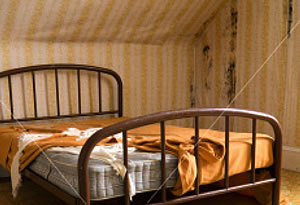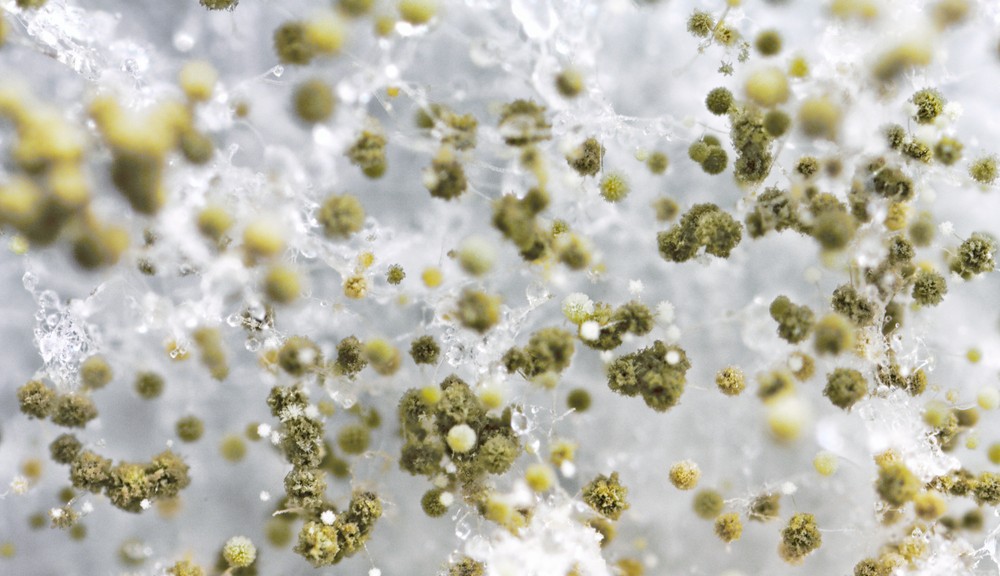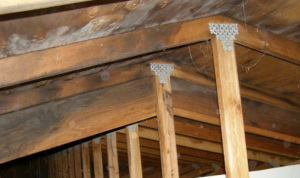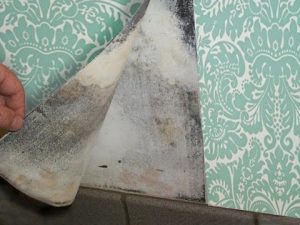Mold Testing Services
A typical Mold inspection service will consist of the following elements:
A thorough Inspection of areas of concern, emphasizing areas of water intrusion, if any.
If required, moisture levels in the building materials in the areas of concern will be tested.
Collection and Analysis of required Air-O-Cell samples or other air sampling methods inside and outside the building to measure the mold spores in the air.
Final Report consisting of all findings and recommendations
Bulk Sampling: Mold Swabs and Bio Tape
The sampling process using either Swabs or Bio Tape is primarily to confirm and identify mold or any other indoor air condition that may cause discomfort for the occupants in a building. Generally, when excessive moisture accumulates in certain parts of a building, mold growth will occur. It is impossible to eliminate all molds and mold spores in the indoor environment; however, mold growth can be controlled indoors by controlling indoor moisture.
Air Sampling: Air-O-Cell and Agar Plate
Using Air-O-Cell cassettes or Agar Plates, air samples can be collected and analyzed by an accredited and licensed laboratory, to confirm the presence and identification of mold spores. Generally, the presence of mold spores in the air in a building, at levels greater than the outside, indicates a mold source inside the building
Mold Abatement Monitoring and Testing
Although no regulations exist at present for the Remediation of Mold in Buildings, Environmental LLC will use, at a minimum, recommendations based on the following documents, to establish remediation procedures and re-occupancy criteria:
EPA Document EPA 402-K-01-001”Mold Remediation in Schools & Commercial Buildings”
US Department of Labor / OSHA “A brief Guide to Mold in the Workplace” and
NYC Department of Health – Bureau of Environmental and Occupational Disease Epidemiology –“Guidelines on Assessment and Remediation of Fungi in Indoor Environments”

HOW MUCH DOES MOLD INSPECTION COST?
Smell a musky odor when you walk into your basement or attic? Is there odd looking black spots appearing on your ceilings and walls? Are your allergies mysteriously acting up? If you’ve answered “yes” to any of the above questions, you could be looking at mold infestation within your home which leads you to the same question as MANY other people; how much does mold inspection cost?
Being that mold is not only destructive to a home, but potentially also destructive to occupant health (health issues can range all the way from runny noses to respiratory illnesses), it’s important to take a suspected mold situation seriously.
Generally speaking, a situation such as this will begin with a mold inspection and, if mold is indeed found, proceed with a mold remediation. In this post, we’ll take a look at what you can expect to pay for each of these services – as well as the factors that go into the cost.
HOW MUCH DOES MOLD INSPECTION COST?
A mold inspection consists of a qualified inspector coming to your residence and analyzing it for traces of mold growth. Often times, mold is easily spotted, like if it’s growing in the attic or permeating drywall.
Other times, however, mold-like substances may need to be tested to determine whether or not they are, in fact, mold. In the case where there’s no visible mold growth, inspectors may have to use specialty devices like IR cameras to help them detect where there’s the moisture that could lead to mold growth.
What Effects the Cost of a Mold Inspection?
Cost is largely dependent on the size of the area being tested, how many samples need to be tested and what type of equipment needs to be used to locate and test the mold. The key is finding a reasonable mold inspection company with high credibility and simply asking them how much mold inspection costs.

Do You Need A Mold Inspection?
Places for Mold Inspections
Ceilings and Walls
Hardwood Floors
Vinyl Flooring
Doors and Windows
Hot Water Heaters
Sinks
Shower and Tub Surrounds
Toilets
Bathroom Rooms
Laundry Rooms
Heating, Ventilation and Air Conditioning Systems
Basements
Crawlspaces
Attics
HVAC
What Takes Place During a Mold Inspection?
mold inspections include a thorough examination of the property grounds, building exterior, crawl space, attic and interiors. We assess the property to determine indicators of excess moisture and water damage, identify active growth and take samples.
Mold is microscopic. By the time you see mold a 1” square contains 65 million spores according to the American Industrial Hygiene Association. So what about the “invisible” or microscopic mold you cannot see? Our inspections are designed to look for indicators of these microscopic spores. If you have mold in one room how do you know the spores have not traveled throughout your HVAC system into other areas of the structure? These are all important considerations in a proper, complete mold inspection
Mold needs a combination of oxygen, food and moisture to grow, and since it can eat almost any porous surface, moisture and high humidity levels are usually what triggers the growth. During the inspection, the inspectors seek out the cause of this excessive moisture and identify any active growth and sample potential infected areas
Inspections, testing and remediation are all completely confidential. Our inspectors will arrive in unmarked cars, as we do realize that having mold in your home is not something that you would like for your neighbors to know.

Common Causes of Attic Mold
Bathroom mold, kitchen mold, basement mold, these areas tend to get all the hype, but there is another area that property owners need to be aware of, too, the attic. Mold found in attic areas can be challenging at times when trying to pinpoint the exact cause and source of mold growth. However, there are some common conditions that we routinely find during our mold investigations that are leading contributors to mold growth in attics.
Roof Leaks
Yes, you guessed it, at the top of our list is roof leaks. Several issues can occur around the flashing or the area where the roof plane meets a vertical surface like a vent or a chimney. Missing, deteriorated, or improperly install flashing among other penetration points and inadequate roof repairs are the most common causes of roof leaks. Water seepage also occurs when the roof is beyond the end of its life span. An annual inspection of your roof by a roofing specialist and routine maintenance can prevent leaks in a roof system, effectively reducing the likelihood of mold growth in your attic
Inadequate Roof Ventilation
Without adequate ventilation, moisture-laden air can remain in attic areas. Often, this will cause elevated moisture conditions around the roof framing and roof sheathing. During cold winter months, for example, condensation can occur on the cold roof sheathing creating this damp environment. You may think otherwise, but it is important to keep your attic cool during colder months.
Another common cause of inadequate ventilation is when your soffit vents are blocked by debris. This could be debris from trees, roofing materials, birds’ nest, or insulation – when it is blown into the attic. If proper care is not taken during this time, the insulation can end up blocking the soffit vents. Soffit vents are critical in a passive ventilation system to circulate air from the lower portion of the attic (intake vents) to the upper roof vents (exhaust vents).
It is possible to help improve and correct inadequate roof ventilation conditions by adding more ventilation ports or a powered roof vent. If it is safe to do so, you should also inspect your soffit vents as part of routine maintenance, or hire someone to inspect your attic.
Bath or Kitchen Exhaust Fans Vented into the Attic
Exhaust fans should be vented directly to the exterior of the home, and surprisingly we often find this is not the case. When an exhaust fan is missing its exhaust duct, or if the duct has become separated, the exhaust is then vented directly into the attic space, similar to the situation above meaning the warm damp air is trapped creating the ideal atmosphere for microbial growth. In this case, it’s important to correct the issue an re-route the vents to the outside.

How do you test for mold in your house?
If you see mold in your home, testing is not required, but may be necessary in certain situations. For example, you see mold in your basement, but is it affecting your child’s bedroom on the second floor? Is it in my HVAC system moving throughout my house? Is it under my wood floors, carpets, or behind my walls? These are all pertinent questions and should be addressed and the only way to find out is by conducting a mold test. The question is which mold test should be used?
Mold Tests
A brief description of the available tests will help you decide which you should choose… Home Testing/DIY home mold testing kits are readily available at the local hardware store. Homeowners collect samples of mold according to the kit’s directions, and then send the samples to a laboratory for testing. The problem with home mold testing kits are that they are extremely unreliable. It’s hit or miss that some mold might land on your test kit and as a result, may indicate that you have a problem which you really don’t, or worse that you don’t have a problem and you do! Very unreliable
Surface tests use samples collected from swabs, tape, and other methods from household surfaces. The samples are tested to determine the amount and type of mold growth in the area. The results can vary because the spores aren’t evenly distributed across the area and the testing procedure is not standardized.
Bulk tests require collecting samples of materials from the affected area, sending them to a lab and examining them under a microscope. Observing the mold particles helps determine their concentration, but that is about all. The surface concentration is only one of several elements to consider and is usually not relevant to what you are breathing.
Air tests take samples of air from the suspected areas via an air pump. The samples are sent to a lab, examined under a microscope and a report is created that names the genus and a suspected count. Works relatively well, but does not help with the source of the mold and the margin of error is extremely high.
Culture tests take longer than the others do because they involve allowing the mold spores to mature long enough to be identified. These tests do not count or give any indication of mold source.